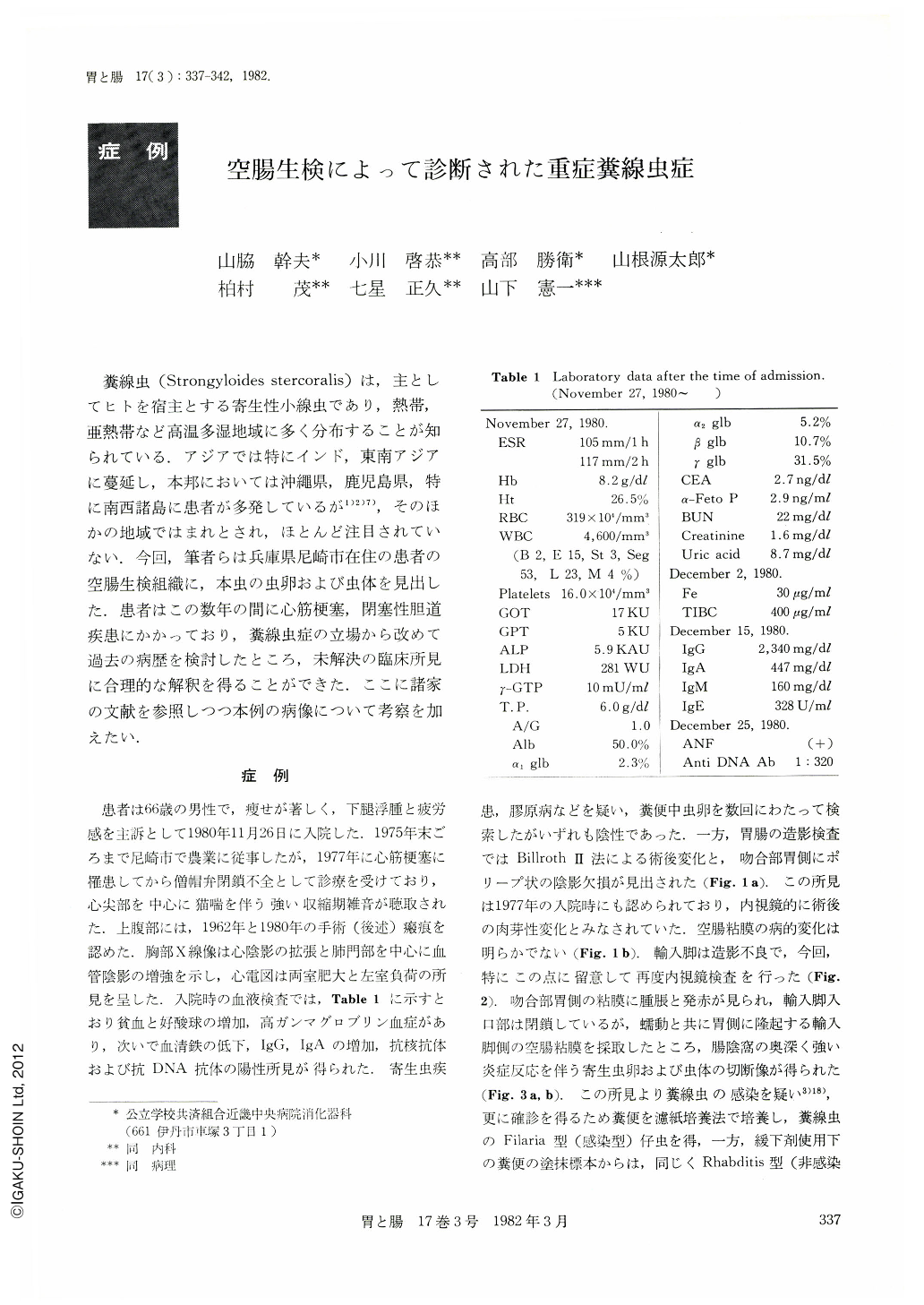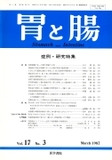Japanese
English
- 有料閲覧
- Abstract 文献概要
- 1ページ目 Look Inside
糞線虫(Strongyloides stercoralis)は,主としてヒトを宿主とする寄生性小線虫であり,熱帯,亜熱帯など高温多湿地域に多く分布することが知られている.アジアでは特にインド,東南アジアに蔓延し,本邦においては沖縄県,鹿児島県,特に南西諸島に患者が多発しているが1)2)7),そのほかの地域ではまれとされ,ほとんど注目されていない.今回,筆者らは兵庫県尼崎市在住の患者の空腸生検組織に,本虫の虫卵および虫体を見出した.患者はこの数年の間に心筋梗塞,閉塞性胆道疾患にかかっており,糞線虫症の立場から改めて過去の病歴を検討したところ,未解決の臨床所見に合理的な解釈を得ることができた.ここに諸家の文献を参照しつつ本例の病像について考察を加えたい.
A 66-year-old retired farmer was readmitted to our hospital with complaints of pretibial edema and fatigability on November 26, 1980. He had histories of myocardial infarction and obstructive disorder of biliary tract during those few years. Persistent eosinophilia with anemia, hypergammaglobulinemia and positive autoantibodies suggested an existence of parasite infection or a kind of collagen disease. He underwend a gastrojejunostomy with Billroth Ⅱ method in 1962 under the diagnosis of gastric ulcer. Granuloma formation at gastric side of anastomotic portion had been noticed endoscopically since 1977, but this finding was considered to be postoperated change. Again, we performed the endoscopic examination with biopsy of jejunal mucosa. Histological examination revealed the sectional image of intestinal strongyloidiasis. Subsequently, characteristic filariform larvae were detected in the stool by means of the filter paper culture technique. Life history of the patient staying in French Indochina and Okinawa during the last World War is noteworthy when we consider the geographical distribution and the distinctive persistent infection of this parasite. He had never left the city of Amagasaki in Hyogo Prefecture since March 1946.
Retrospective investigation of the history brought to light the interesting clinical findings which indicated the injurious changes due to strongyloides infestation. Roentgenologic pulmonary manifestations of unknown origin which were found during the period of admission with myocardial infarction could be caused by larval migration into the lungs. Furthermore, it might be possible that myocardial infarction was brought about by the larvae. Dilatation of common bile duct with the elevation of serum alkaline phosphatase which was found out in May 1980 indicates the invasion of the parasitic females or larvae to the lower portion of biliary tract. Episodic abdominal pain or repeated high fever attack is one of the most typical symptoms of intestinal strongyloidiasis.
After the treatment with pyrvinium pamoate 5 mg/kg for ten days, larvae in stool disappeared and general condition improved gradually. From now on, strict attention must be paid to cut off the persistent infection.

Copyright © 1982, Igaku-Shoin Ltd. All rights reserved.


